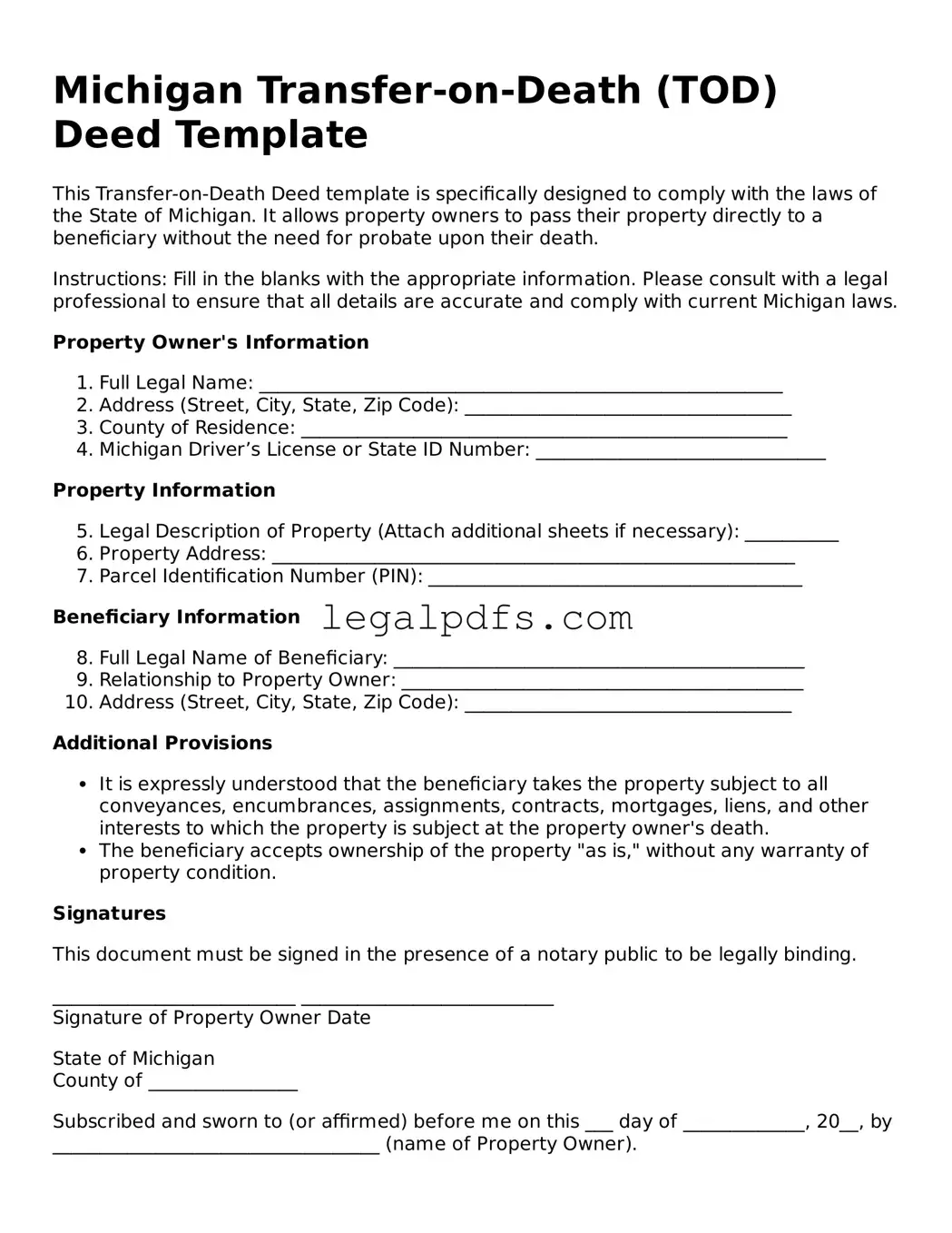What is a Transfer-on-Death (TOD) Deed in Michigan?
A Transfer-on-Death Deed in Michigan allows property owners to pass their real estate to a beneficiary upon their death without the property having to go through probate. This legal document must be properly completed and recorded before the owner's death to be effective.
How does a TOD Deed differ from a regular deed?
A regular deed transfers property rights immediately upon its execution and recording, whereas a TOD deed only transfers these rights upon the death of the owner. The significant benefit of a TOD deed is that it allows the property to bypass the probate process.
Who can create a TOD Deed in Michigan?
Any individual who owns real property in Michigan and has the legal capacity to enter into a contract can create a TOD Deed. This means the individual must be of sound mind and not under any undue influence or restraint.
Can a TOD Deed be revoked?
Yes, the property owner can revoke a TOD Deed at any time before their death. To do so, the owner must execute either a new deed that explicitly revokes the prior TOD Deed or a subsequent TOD Deed that disposes of the property differently. Any revocation must be recorded in the same office as the original deed for it to be effective.
What happens if the beneficiary predeceases the owner?
If the beneficiary named in a TOD Deed dies before the owner, the TOD Deed typically becomes void unless an alternate beneficiary has been named. It is important to designate one or more contingent beneficiaries when creating a TOD Deed.
Are there any limitations on what property can be transferred using a TOD Deed?
In Michigan, a TOD Deed can only be used to transfer real property, such as homes and land. It cannot be used to transfer personal property, such as vehicles or household items. Additionally, certain types of real property may be subject to additional restrictions or requirements.
Does the beneficiary need to take any action before the owner's death to claim the property?
No, the beneficiary does not need to take any action before the property owner's death to claim the property under a TOD Deed. However, after the owner's death, the beneficiary needs to record a death certificate and a form of acceptance with the county register of deeds to complete the transfer process.
How does a TOD Deed affect the owner’s rights?
The creation of a TOD Deed does not affect the owner's rights to use, enjoy, or sell the property during their lifetime. The owner retains full control over the property and can alter or revoke the TOD Deed if they choose to do so.
Is a TOD Deed subject to the claims of creditors?
Upon the death of the property owner, the transferred property through a TOD Deed may still be subject to the claims of the owner's creditors. Proper estate planning is recommended to understand and address potential claims against the estate.
